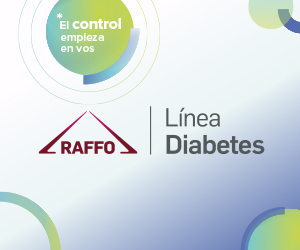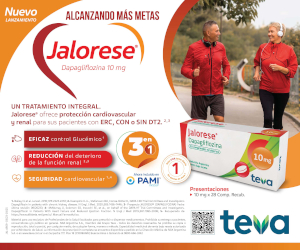Minidebate 11: The paradox between technological advances and the situations of crisis and inequity during a pandemic and an epidemic context
DOI:
https://doi.org/10.47196/diab.v54i3Sup.320Keywords:
technology, mellitus diabetesAbstract
Innovative technologies bring great possibilities of increasing human well-being. However, technological progress does not guarantee equitable health outcomes. While technological advances define the way in which people, systems and information interact, communities with fewer resources tend to be left excluded, and that will subsequently have an impact on quality. Publications explain that in communities where technological solutions have been imposed, there has later been abandoned equipment, software that is incompatible and frustrated management policies. Nevertheless, there are some cases of general technological implementations that undermine equity, justice and human rights. For example, the use of high technology in medical interventions as preventive measures or diagnosis, the use of genes which prevent the reuse of crop seeds allowed for consuming, and many more. To obtain equitable results, the design and planning of the technology must respect the ethical principles, local values and their folklore, among other points. Decisions require compromise in the medium and long term and local leadership.
References
-1- Linari MA, González C, Dieuzeide G, Badia MF, Argerich MI, Echenique M, et al. Calidad de vida y prestaciones en salud en pacientes con diabetes mellitus tipo 2 según región geográfica en Argentina. Revista de la Sociedad Argentina de Diabetes 2019; 53 (3): 87-96.
-2- Fong H, Harris E. OMS. Tecnología, innovación y equidad sanitaria. Boletín de la Organización Mundial de la Salud 2015; 93:438-438A. doi: http://dx.doi.org/10.2471/BLT.15.155952.
-3- Coloma J, Harris E. Sustainable transfer of biotechnology to developing countries: fighting poverty by bringing scientific tools to developing-country partners. Ann N Y Acad Sci. 2008; 1136 (1):358–68. http://dx.doi.org/10.1196/annals.1425.014 pmid: 17954678.
-4- Avilés W, Ortega O, Kuan G, Coloma J, Harris E. Integration of information technologies in clinical studies in Nicaragua. PLoS Med. 2007 Oct; 4(10):1578–83. http://dx.doi.org/10.1371/journal.pmed.0040291 pmid: 17958461.
-5- International Diabetes Federation. IDF Diabetes Atlas, 9th ed. Brussels, Belgium. Atlas de la Diabetes de la FID. 2019.
-6- World Health Organization. Global Report on Diabetes. ISBN. 2016.
-7- Mobasseri M, Shirmohammadi M, Amiri T, Vahed N, Hosseini Fard H, Ghojazadeh M. Prevalence and incidence of type 1 diabetes in the world: a systematic review and meta-analysis. Health Promot Perspect. 2020; 10 (2):98-115. Published 2020 Mar 30
-8- Secretaría de Gobierno de Salud. 4ta Encuesta Nacional de Factores de Riesgo. Informe definitivo. 2019; 262. Available from: http://www.msal.gob.ar/images/stories/bes/graficos/0000001622cnt-2019-10_4ta-encuesta-nacional-factores-riesgo.pdf.
-9- Battelino T, Danne T, Bergenstal RM, Amiel SA, Beck R, Biester T, et al. Clinical targets for continuous glucose monitoring data interpretation: Recommendations from the international consensus on time in range. Diabetes Care. 2019.
-10- Serfling G, Kalscheuer H, Schmid SM, Lehnert H. New technologies in diabetes treatment. Internist. 2019.
-11- Diabetes Technology: Standards of Medical Care in Diabetes-2020. Diabetes Care. 2020.
-12- Kubiak T, Priesterroth L, Barnard-Kelly K Psychosocial aspects of diabetes technology Diabet. Med. (2020) 37, 448–454.
-13- Fagherazzi G, Ravaud P. Digital diabetes: Perspectives for diabetes prevention, management and research Diabetes & Metabolism 45 (2019) 322–329.
-14- Borges U. Continuous Glucose Monitoring in Type 1 Diabetes Human Factors and Usage Journal of Diabetes Science and Technology 2016, Vol. 10(3) 633–639.
-15- Heinemann L. Elderly patients with diabetes: special aspets to consider. J Diabetes sci Technol 2019, vol 13(4)611-613.
-16- Diabetes Technology: Standardas of Medical Care in Diabetes. 2020. Diabetes Care 2020; 43: (Suppl1): S77-S88.
-17- Mulinacci G, Alonso T, Snell-Bergeon J K, ShahV N. Glycemic Outcomes with Early Initiation of Continuous Glucose Monitoring System in Recently Diagnosed Patients with Type 1 Diabetes. Diabetes Technol Ther 2019; 21: 6-10.
-18- Zhu J, Volkening L K, Laffel L. Distinct Patterns of Daily Glucose Variability by Pubertal Status in Youth With Type 1 Diabetes. Diabetes Care 2020; 43: 22-28.
-19- Dovc K. Cargnelutti K, Sturm A, Selb J, Bratina N. Continuous Glucose Monitoring Use and Glucose Variability in Pre-school Children with Type 1 Diabetes, Diabetes Res Clin Pract 2019; 147: 76-80.
-20- Piona C, Dovc K, Mutlu G Y, Grad K, Gregorc P, Battelino T, Bratina N. Nonadjunctive flash glucose monitoring system use during summer-camp in children with type 1 diabetes – the free-summer study. Pediatr Diabetes 2018; 19: 1285-1293
-21- Suzuki J, Urakami T, Yoshida K, Kuwabara R, Mine Y, Aoki M, Morioka I. Association between scanning frequency of flash glucose monitoring and continuous glucose monitoring-derived glycemic makers in children and adolescents with type 1 diabetes. Pediatr Int. 2020 Aug 3. doi: 10.1111/ped.14412.
-22- Tauschmann M, Allen J M, Nagl K y coll. HomeUse of Day and Night Hybrid Closed Loop Insulin Delivery in Very Young Children: A Multicenter 3- Week, Randomized Trial. Diabetes Care 2019; 42: 594-600.
Downloads
Published
How to Cite
Issue
Section
License

This work is licensed under a Creative Commons Attribution-NonCommercial-NoDerivatives 4.0 International License.
Dirección Nacional de Derecho de Autor, Exp. N° 5.333.129. Instituto Nacional de la Propiedad Industrial, Marca «Revista de la Sociedad Argentina de Diabetes - Asociación Civil» N° de concesión 2.605.405 y N° de disposición 1.404/13.
La Revista de la SAD está licenciada bajo Licencia Creative Commons Atribución – No Comercial – Sin Obra Derivada 4.0 Internacional.
Por otra parte, la Revista SAD permite que los autores mantengan los derechos de autor sin restricciones.


































